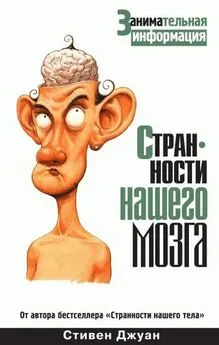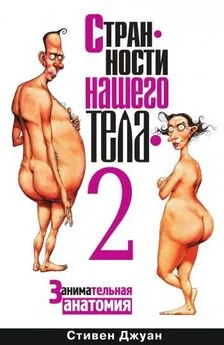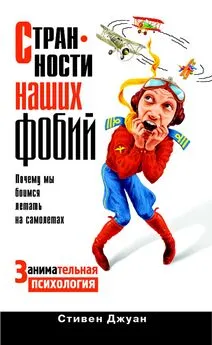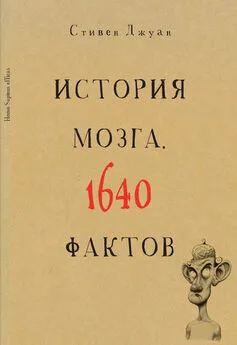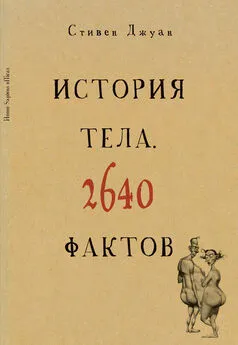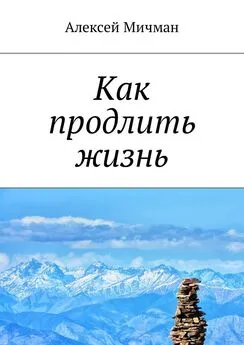Стивен Джуан - Могут ли поцелуи продлить жизнь?
- Название:Могут ли поцелуи продлить жизнь?
- Автор:
- Жанр:
- Издательство:Литагент «РИПОЛ»15e304c3-8310-102d-9ab1-2309c0a91052
- Год:2011
- Город:Москва
- ISBN:978-5-386-02692-9
- Рейтинг:
- Избранное:Добавить в избранное
-
Отзывы:
-
Ваша оценка:
Стивен Джуан - Могут ли поцелуи продлить жизнь? краткое содержание
Доктор Стивен Джуан – ученый-антрополог, автор мировых бестселлеров «Странности нашего тела» и «Странности нашего мозга». Родился и вырос в США, сейчас живет в Австралии, где преподает в университете и выступает на радио и телевидении. В новой книге доктор Джуан продолжает искать объяснение самым странным странностям нашей жизни.
Можно ли доверять детектору лжи?
Почему беременных тошнит по утрам?
Почему одних людей комары кусают чаще других?
Можно ли клонировать неандертальца?
Можно ли определить характер человека по его ушам?
Ответы на эти и другие вопросы вы найдете в этой книге.
Могут ли поцелуи продлить жизнь? - читать онлайн бесплатно ознакомительный отрывок
Интервал:
Закладка:
87
J. Rains and F. Taylor, Chronic Daily Headache: An Overview, American Council for Headache Education, Mount Royal, New Jersey, 2006.
88
Mayo Clinic, Thunderclap Headaches, Mayo Clinic Foundation for Medical Education, Rochester, Minnesota, 24 May 2005.
89
S. Juan, Aching heads’, National Post, 10 April 2006, p. 1.
90
Mayo Clinic, Ice Cream Headaches, Mayo Clinic Foundation for Medical Education, Rochester, Minnesota, 24 May 2006.
91
S.Juan, ‘What is a brain freeze?’, The Register, 16June 2006.
92
Johns Hopkins Medicine, Health Information Library: MSG Headaches, Johns Hopkins Health Information Service, Baltimore, Maryland, 24 May 2006.
93
S.Juan, ‘What is a Chinese restaurant headache?’, The Register, 16 June 2006.
94
S. Juan, ‘Why doesn’t a hangover occur the night before?’, The Register, 28 July 2006.
95
S. Juan, ‘Your head will hurt tomorrow’, National Post, 13 November 2006, p. 1.
96
H. Moore, Avoiding post-lumbar puncture headaches’, Pulmonary Reviews, 2000, vol. 5, no. 12, pp. 1–7.
97
Dr R. Gaiser is from the Department of Anesthesiology at the University of Pennsylvania.
98
R. Gaiser, ‘Postdural puncture headache’, Current Opinion in Anesthesiology, 2006, vol. 19, no. 3, pp. 249–253.
99
Dr C.L. Wu is from the Department of Anesthesiology at Johns Hopkins University.
100
C. Wu, A. Rowlingson, S. Cohen, R. Michaels, G. Courpas, E.Joe and S. Liu, ‘Gender and postdural puncture headache’, Anesthesiology, 2006, vol. 105, no. 3, pp. 613–618.
101
S. Juan, ‘What is a post-lumbar headache?’, The Register, 27 October 2006.
102
Dr Andrew Lloyd is an infectious disease physician in Sydney, Australia.
103
Personal communication, 29 August 2006.
104
Dr J.D. Grabenstein is from the US Offi ce of the Surgeon General.
105
J. Grabenstein, P. Pitman, J. Greenwood and R. Engler, ‘Immunization to protect the US Armed Forces: Heritage, current practice, and prospects’, Epidemiologic Reviews, 2006, vol. 28, no. 1, pp. 3—26.
106
Dr A. Prysyazhnyuk is from the Research Centre for Radiation Medicine of AMS of the Ukraine in Kiev.
107
A. Prysyazhnyuk, V. Gristchenko, Z. Fedorenko, L. Gulak, M. Fuzik, K. Slipenyuk and M. Tirmarche, ‘Twenty years after the Chernobyl accident: Solid cancer incidence in various groups of the Ukrainian population’, Radiation and Environmental Biophysics, 2007, vol. 46, no. 1, pp. 43–51.
108
Drs R.A. Schwartz, C.A. Janusz and C.K. Janniger are from the University of Medicine and Dentistry at the New Jersey Medical School in Newark.
109
R.A. Schwartz et al., ‘Seborrheic dermatitis: An overview”, American Family Physician, 2006, vol. 74, no. 1, pp. 125–130.
110
Dr Brent Archinal is from the Astrogeology Team of the US Geological Survey in Flagstaff, Arizona.
111
B. Archinal, How far can you see?’, Astronomy, May 1997, p. 20.
112
J. Apt, ‘Orbit, the astronauts’ view of home’, National Geographic, November 1996, pp. 8—27.
113
D. Fisk and R. Brown, ‘Chinese puzzle’, New Scientist, 15 July 1995, p. 65.
114
S. Juan, How far can the naked eye see?’, The Register, 1 December 2006.
115
S. Juan, Can the Great Wall be seen from the moon?’, Epoch Times, 29 November 2006.
116
S. Juan, ‘Can you really see the Great Wall of China from the Moon?’, The Register, 1 December 2006.
117
Dr Samuel Salamon is from the Cataract Eye Centre of Cleveland, Ohio.
118
S. Juan, ‘Why do babies blink less often than adults?’, The Register, 30 June 2006.
119
D.M. Stein, G. Wollstein, H. Ishikawa, E. Hertzmark, R. Noecker and J. Schuman are from the Department of Ophthalmology at the School of Medicine at the University of Pittsburgh.
120
D. Stein et al., Effect of corneal drying on optical coherence tomography’, Ophthalmology, 2006, vol. 113, no. 6, pp. 985—91.
121
Dr Stephen Miller is the Director of the Clinical Care Centre of the American Optometric Association in St Louis.
122
Personal communication, 23 August 2006.
123
Drs N.S. Logan, L. Davies, E. Mallen and B. Gilmartin are from the Human Myopia Research Centre at Aston University in Birmingham, UK.
124
N. Logan et al., Ametropia and ocular biometry in a UK university student population’, Optometry and Vision Science, 2005, vol. 82, no. 4, pp. 261–266.
125
S. Juan, Why are so many humans near sighted?’, The Register, 22 September 2006.
126
S. Juan, ‘How does a cross-eyed person’s view differ from others?’, The Register, 6 October 2006.
127
Dr Michael Lawless of the Department of Ophthalmology at the Royal North Shore Hospital in Sydney, Australia.
128
Personal communication, 26 August 2006.
129
Drs M.A. Bullimore, K. Reuter, L.Jones, G. Mitchell, J. Zoz and M. Rah are from the Ohio State University College of Optometry in Columbus.
130
M. Bullimore et al., ‘The study of progression of adult nearsightedness (SPAN): Design and baseline characteristics’, Optometry and Vision Science, 2006, vol. 83, no. 8, pp. 594–604.
131
Dr Armand Tanguay Jr is a professor of electrical engineering at the University of Southern California.
132
M. Stroh, ‘We see the future better than 20/20’, Popular Science, June 2005, p. 59.
133
S. Juan, ‘Is an artificial eye close to reality?’, The Register, 24 November 2006.
134
‘Blind person sees colour with touch only”, Dominican Today (Santo Domingo), 17 November 2005, p. 1.
135
S. Juan, ‘Can the blind feel colours’, Epoch Times, 15 November 2006, p. 11.
136
D. Simons, ‘Attentional capture and inattentional blindness’, Trends in Cognitive Sciences, 2000, vol. 4, no. 4, pp. 147–155.
137
Drs S.B. Most, B. School, E. Cliff ord and D. Simons are from the Department of Psychology at Harvard University.
138
S. Most et al., ‘What you see is what you set: Sustained inattentional blindness and the capture of awareness’, Psychological Review, 2005, vol. 112, pp. 217—42.
139
Drs Mika Koivisto and Antti Revonsuo are from the Centre for Cognitive Neuroscience at the University of Turku in Finland.
140
M. Koivisto and A. Revonsuo, ‘The role of unattended distracters in sustained inattentional blindness’, Psychological Research, 2008, vol. 72, no. 1, pp. 39–48, Epub 5 July 2006.
141
S.Juan, ‘When is seeing not seeing?’, The Register, 19 January 2006.
142
Dr Kenton McWilliams is from the School of Optometry at the University of Missouri in St Louis.
143
Personal communication, 18 May 2006.
144
R. Williams and W. Madil, ‘Goggle eyed’, New Scientist, 17 June 2000, p. 65.
145
Dr Anna Gislen is from Lund University in Sweden.
146
A. Gislen and L. Gislen, ‘On the optical theory of underwater vision in humans’, Journal of the Optical Society of America A: Optics, Image Science, and Vision, 2004, vol. 21, no. 11, pp. 2061–2064.
147
A. Gislen, E. Warrant, M. Dacke and R. Kroeger, ‘Visual training improves underwater vision in children’, Vision, 2006, vol. 46, no. 20, pp. 3443–3450.
148
J. Travis, ‘The eyes have it’, Science News, 17 May 2003, p. 308.
149
E. Aserinsky and N. Kleitman, ‘Regularly occurring periods of eye motility, and concomitant phenomena, during sleep’, Science, 1953, vol. 118 (3062), pp. 273–274.
150
Dr David Maurice is from Columbia University.
151
D. Maurice, ‘The Von Sallmann lecture 1996: An ophthalmological explanation of REM sleep’, Experimental Eye Research, 1996, vol. 66, no. 2, pp. 139–145.
152
Drs F. Hoff mann and G. Curio are from the Free University of Berlin.
153
F. Hoff mann and G. Curio, ‘REM sleep and recurrent corneal erosion – hypothesis’, Klinische Monatsblatterfur Augenheilkunde, 2003, vol. 220, nos. 1–2, pp. 51–53.
154
‘Rolling eyes gather more oxygen’, New Scientist, 28 February 1998, p. 23.
155
A. Mijolla, international Dictionary of Psychoanalysis, eNotes, Seattle, 26 May 2006.
156
G. Cook, ‘How do we take advantage of infl ection points?’, Cook & Company Commentary, Winter 2003, p. 2.
157
S. Juan, ‘What’s this “scotomisation” in The Da Vinci Code?’, The Register, 9 June 2006.
158
S. Juan, ‘Why seeing is not always believing’, National Post, 28 September 2006, pp. 1–2.
159
S. Juan, ‘Great moments in human research’, The Register, 27 January 2007.
160
S. Juan, ‘Great moments in human research’, The Register, 3 February 2007.
161
University of California, San Diego Medical Centre, Types of Nasal Dysfunction, University of California, San Diego, 12 August 2006.
162
S. Juan, Are there people with no sense of smell?’, The Register, 16 September 2006.
163
S. Juan, ‘Is there an evolutionary advantage in snoring?’, The Register, 14 July 2006.
164
S. Juan, ‘What evolutionary advantage is there in making a sound while snoring?’, National Post, 30 October 2006, pp. 1—2
Читать дальшеИнтервал:
Закладка:


